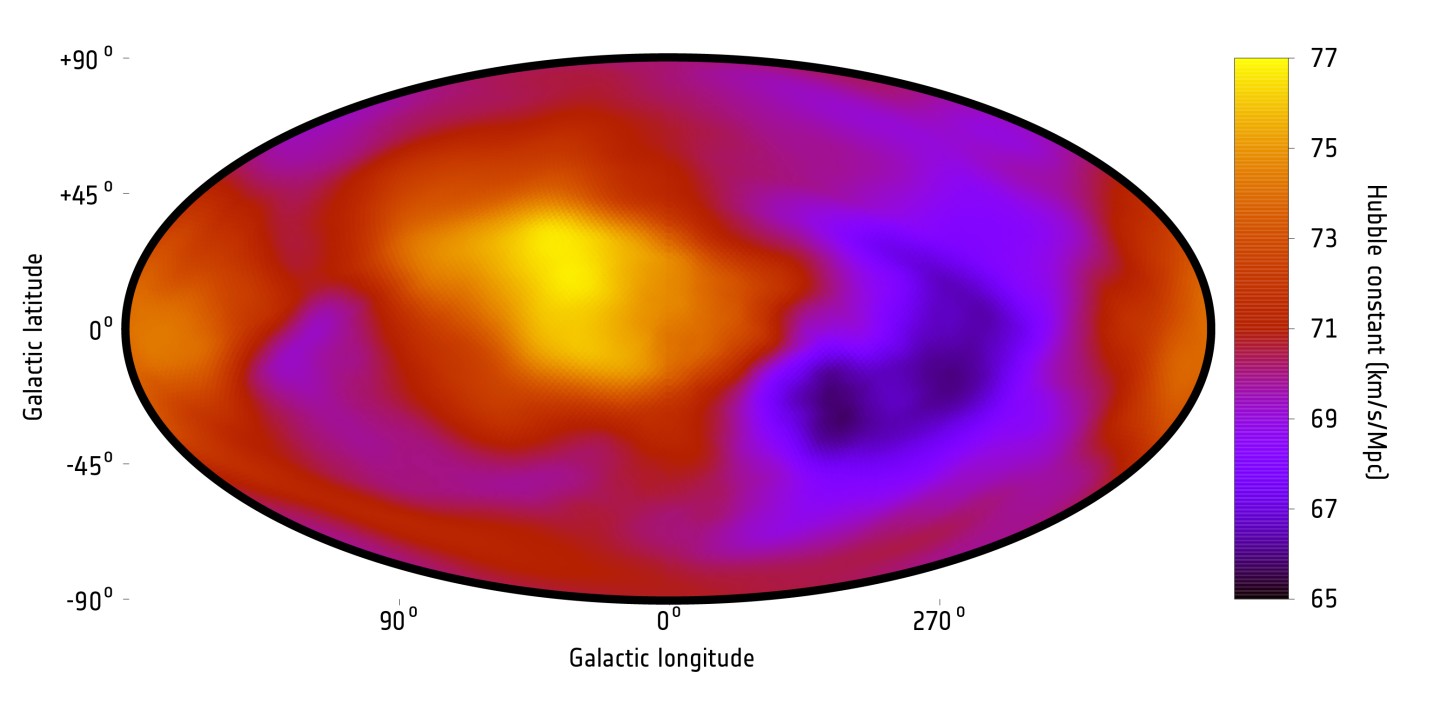One of the core components of cosmology is the understanding that the universe is expanding evenly in all directions. It was predicted by theory decades ago, and supported by measurements of the cosmic microwave background. But new X-ray observations now suggest that this may not be the case after all – certain areas may be expanding faster than others.
The isotropy hypothesis says that the universe has more or less the same properties in any direction. That’s true on the absolutely gigantic scale of the cosmos, anyway – there are obviously differences at the local scale.
This idea has been a lynchpin of cosmology for decades, and recent observations have agreed with it. In 2013, ESA unveiled a map made by the Planck space telescope of the cosmic microwave background (CMB), radiation left over from the Big Bang. And as predicted, it was “almost perfect,” with only tiny temperature variations in different directions.
But looking at the CMB is looking at the universe when it was a cosmic newborn, merely 380,000 years old. Fast-forward 13.5 billion years, and there’s no guarantee the universe is still so uniform today. That’s exactly what the new study set out to investigate – and the results surprised the researchers.
“Together with colleagues from the University of Bonn and Harvard University, we looked at the behavior of over 800 galaxy clusters in the present universe,” says Konstantinos Migkas, co-lead author of the study. “If the isotropy hypothesis was correct, the properties of the clusters would be uniform across the sky. But we actually saw significant differences.”

The team made these observations using a range of X-ray observatories, including ESA’s XMM-Newton, NASA’s Chandra and Germany’s ROSAT. This allowed them to take the temperature of the hot gas in those galaxy clusters, and compare the results to how bright those objects are in the sky.
If the universe was the same in all directions – and was expanding at the same rate everywhere – then clusters that were around the same temperature and distance should have a similar brightness. But to their surprise, the researchers noticed that this wasn’t the case.
“We saw that clusters with the same properties, with similar temperatures, appeared to be less bright than what we would expect in one direction of the sky, and brighter than expected in another direction,” says Thomas Reiprich, co-lead author of the study. “The difference was quite significant, around 30 percent. These differences are not random but have a clear pattern depending on the direction in which we observed in the sky.”
The team ruled out other factors that might influence the results. The data didn’t support the idea that dust and gas clouds were making certain areas fainter, nor the idea that the enormous gravitational effects of the clusters were affecting the measurements. That leaves the team with the answer that different parts of the universe are expanding at different rates.
The implications of this are huge. Many astronomical measurements are based on the fundamental assumption that certain cosmological parameters are constant across the entire universe, so there’s no telling what else we’re wrong about.
“If the universe is truly anisotropic, even if only in the past few billion years, that would mean a huge paradigm shift because the direction of every object would have to be taken into account when we analyze their properties,” says Migkas. “For example, today, we estimate the distance of very distant objects in the universe by applying a set of cosmological parameters and equations. We believe that these parameters are the same everywhere. But if our conclusions are right than that would not be the case and we would have to revisit all our previous conclusions.”
Thankfully, the researchers don’t recommend a hasty return to the drawing board. They admit that the sample is relatively small, and more data is needed before such profound conclusions can be accepted. Future X-ray missions, such as ESA’s Euclid, will provide that extra data.
The research was published in the journal Astronomy & Astrophysics. The team describes the work in the video below.
The Universe might not be expanding at the same rate everywhere
Source: ESA
Source of Article